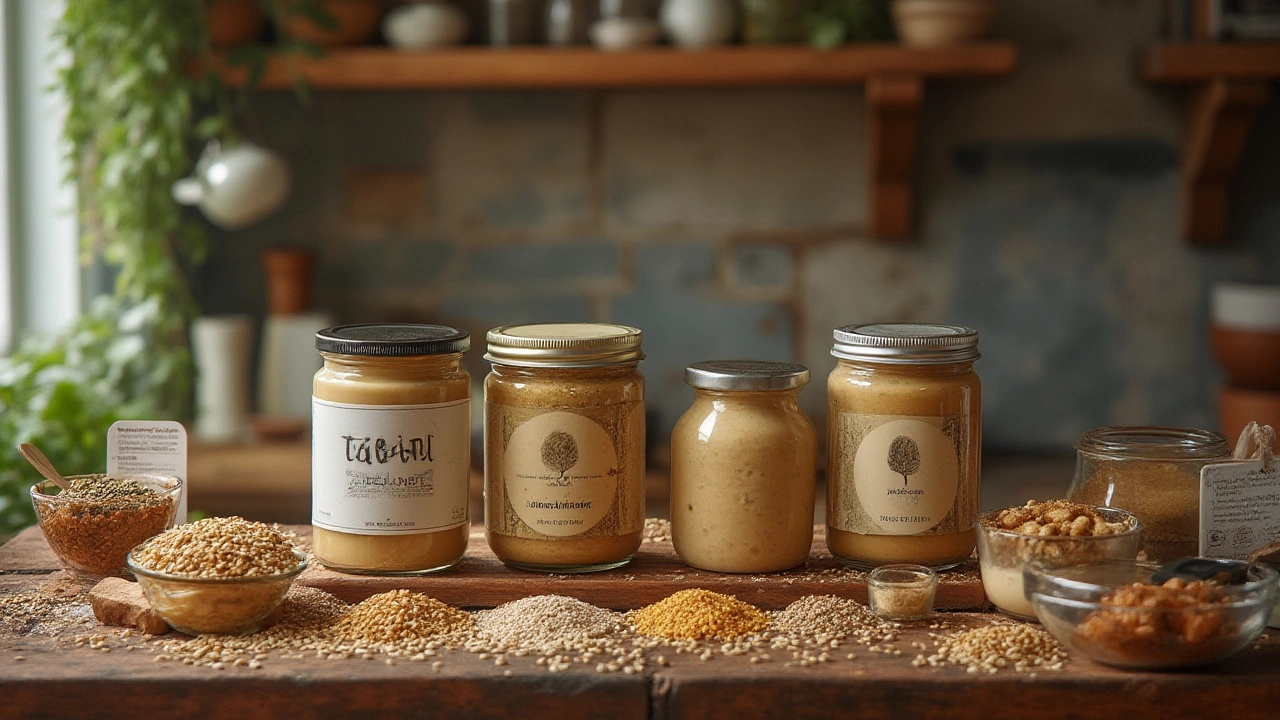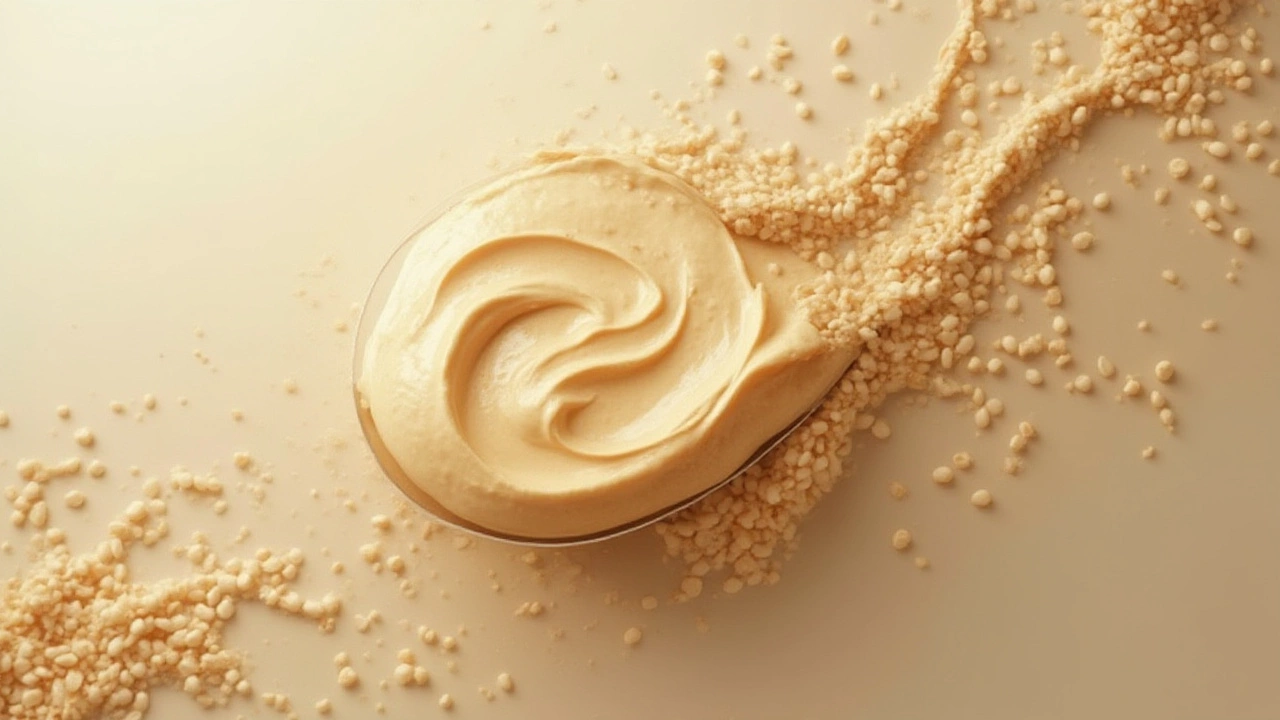
Imagine slathering a creamy dollop of tahini on fresh sourdough, only to wonder—wait, is this actually vegan? Tahini is having a massive moment in vegan kitchens, from Brighton brunch cafes to phone-lit food shoots on Instagram. You see the label and think: sesame paste. Sesame’s a plant, right? Point for Team Vegan. But it’s not that simple. A lot more goes into calling a food vegan than just its base ingredient, and tahini is the perfect example of why you can’t always trust assumptions, even if your vegan mate swears by it.
What’s Really in Your Tahini? Ingredients and Processing
On the most basic level, tahini is a paste made by grinding hulled or unhulled sesame seeds. It’s been a staple around the Mediterranean and the Middle East for centuries. The standard process uses nothing but sesame. That sounds vegan, right? And most of the time, it stays that way. But here’s where things start to get murky. Some commercial brands slip in additives—think emulsifiers, oils, stabilisers, or even dairy powder for texture or shelf life.
Get this: a couple of large tahini producers in Europe use milk powder as an anti-caking agent. The label might just say "tahini paste" until you check the ingredients in tiny print. If you buy tahini from a bulk store or a deli where the packaging is limited, there’s a risk of cross-contact with animal-derived products, especially if the same equipment is used for products like yogurt dips or cheese spreads. It’s not all fear-mongering; it’s about being aware. I’ve stood in line at our local Brighton market and watched the staff swing from making labneh to scooping out sesame paste, gloves and all. If you’re committed to avoiding even traces of dairy, you do have to consider the small stuff, too.
Some brands also blend in honey for a touch of sweetness, especially if they're aiming for a spread similar to halva. Or they might go for palm oil, which opens another ethical can of worms, even if it's not animal-based. If you spot "honey" or "milk solids" or just "natural flavouring," be aware, because labels aren’t always transparent or easy to decode. My tip: always check for the Vegan Society logo when you want true peace of mind. Not all tahini is certified, but those that are must meet strict standards, no animal derivatives, no iffy cross-production risk.
Hidden Animal Products and Manufacturing Secrets
It’s wild how many vegan-labeled products aren’t 100% vegan if you lift the hood and look underneath. For tahini, the main risk isn’t usually the seeds—it’s everything that happens in the factory. Equipment used to process sesame is often shared with dairy or egg-based foods to save on costs. This is called cross-contamination, and it’s why some people see a “may contain milk” statement, even if milk isn’t an intentional ingredient. Factories aren’t always on top of allergy protocols, especially outside the UK where sesame allergies get less attention. So there’s a reasonable risk for traces of milk, even in jars labeled “dairy-free.”
There’s also animal-derived glycerin—a sneaky additive used in some processed tahini to maintain texture. Genuine vegan glycerin comes from plants, but animal sources are cheaper for some large-scale companies. Unless it’s labeled “vegetable glycerin,” assume it could be either. If you’re buying specialty tahini blends (black tahini, roasted, or sweetened) from outside the UK, make double sure you know what’s in that jar. Some tahini halvas in Greek and Turkish grocers use egg white or dairy to boost texture and flavor.
In certain regions, even small artisan brands might still wash or whiten sesame seeds using animal bone char, similar to traditional sugar processing. This is rare nowadays, especially in mainstream UK brands, but it still lingers in corners of the global supply chain. If that bugs you or you're strict about veganism, look for brands that confirm their seeds are bone char–free. Demand is rising, but transparency is slow to catch up. Here's a handy table to sum up some common non-vegan risks in tahini:
| Ingredient or Process | Non-Vegan Risk | How to Spot It |
|---|---|---|
| Milk powder | Dairy contamination | Look for "milk solids" on label |
| Honey | Animal-derived sweetener | Check for "honey" or "natural sweeteners" |
| Animal-based glycerin | Hidden animal origin in texture agents | Ask about glycerin source or see “vegetable glycerin” |
| Bone char bleaching | Seeds processed with animal bones | Research brand’s seed whitening process |
| Cross-contamination | Processed near dairy/egg products | Look for “may contain milk/eggs” statements |
It’s a lot to take in, right? But the reality is, not all tahini is created equal from a vegan perspective, even when ingredient lists seem identical on the surface.

How to Choose a Truly Vegan Tahini: Tips, Brands, and Labels
Walking into a shop and grabbing the first jar you see isn’t enough if you want the real deal. I’ve learned, after being caught out by a sneaky bit of honey, that you really do have to scan every label. My go-to method: start with UK brands certified by the Vegan Society. Meridian and Sunita both make pure tahini from 100% sesame seeds, processed on dedicated lines, and state their certifications right on the jar. They also take allergens seriously, actually testing for traces, which not every brand bothers to do. Fancy a taste test one day? These brands have both hulled (smoother, milder) and unhulled (earthier, stronger) tahini options.
If you go for imported brands, email or social DM them to check their processes—most will answer (eventually). Stick with smaller batches from local Brighton health shops, where you can actually find out who made it and how. If you’re making tahini at home, you’ve got total control. All you need are sesame seeds, a food processor, and salt if you want. No animal products, no worries. (Pro-tip: roasting the seeds first brings out those gorgeous nutty flavours.)
What about eating out? Hummus on toast is everywhere in Brighton, but even here, the ingredients aren’t always transparent. I now ask directly if there’s dairy or honey in the dip, especially in independent cafes where recipes can change with the chef’s mood. Most are happy to answer, and if not, I skip the tahini. Restaurants with vegan menus usually stick with the basic sesame-only paste, but chains sometimes opt for sweeter, richer blends that can hide unwanted extras.
Here are some quick tips for finding authentic vegan tahini:
- Always check the ingredient list, even for simple brands.
- Look for the Vegan Society or suitable vegan certification logo.
- If ingredients mention "natural flavours" or "glycerin," contact the producer for details.
- When possible, buy from specialty vegan stores or online shops with clear labels.
- Try making your own for total control—roasted sesame seeds, a pinch of salt, and blend until creamy!
I can’t tell you how many times Jonas has caught me lurking on the tahini aisle, phone at the ready for label photos. Finding the right one is part detective work, part commitment to the cause.
The Bigger Picture: Vegan Food Labels, Trust, and How to Stay Informed
It all comes down to trust. Food production, even with something as simple as tahini, is a tangled web of processes, shortcuts, and conflicting claims. Global demand for plant-based protein is bigger than ever—did you know that UK tahini imports shot up by 12% since 2022, driven by vegan diets and the TikTok hummus trend? But supply chains haven’t all caught up in terms of transparency. Even now, words like "natural" and "pure" can just mean unregulated marketing.
If you want to guarantee your tahini is vegan, you’ve got to be on your toes. Nothing beats a transparent ingredient list and a clear certification logo. But always stay skeptical if the label is vague. Call brands out on social media—British producers are way more responsive now, especially with how quickly dodgy claims go viral. Support local shops that source carefully and ask your favourite cafes about their suppliers. Sharing info with friends helps too; you’d be surprised what comes out when someone else’s mishap makes it to your WhatsApp group.
If you love experimenting, try making your own at home and see the difference—in taste, quality, and peace of mind. Use it in salad dressings, dips, brownies, and even vegan cheesecakes, knowing exactly what you’re eating. Don’t let the odd confusing label put you off tahini forever; just use it as motivation to find a brand that shares your values. The world of vegan eating is full of curveballs, and with tahini, it’s just about learning the game.





